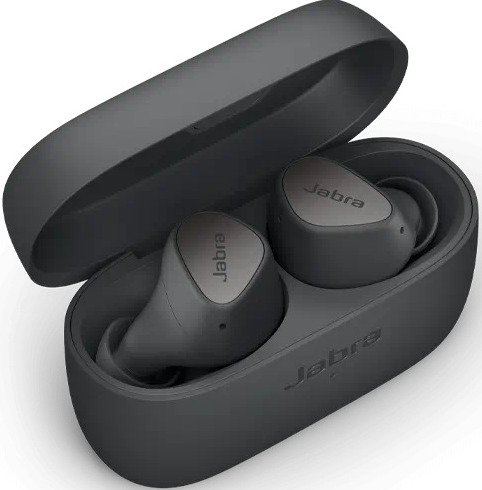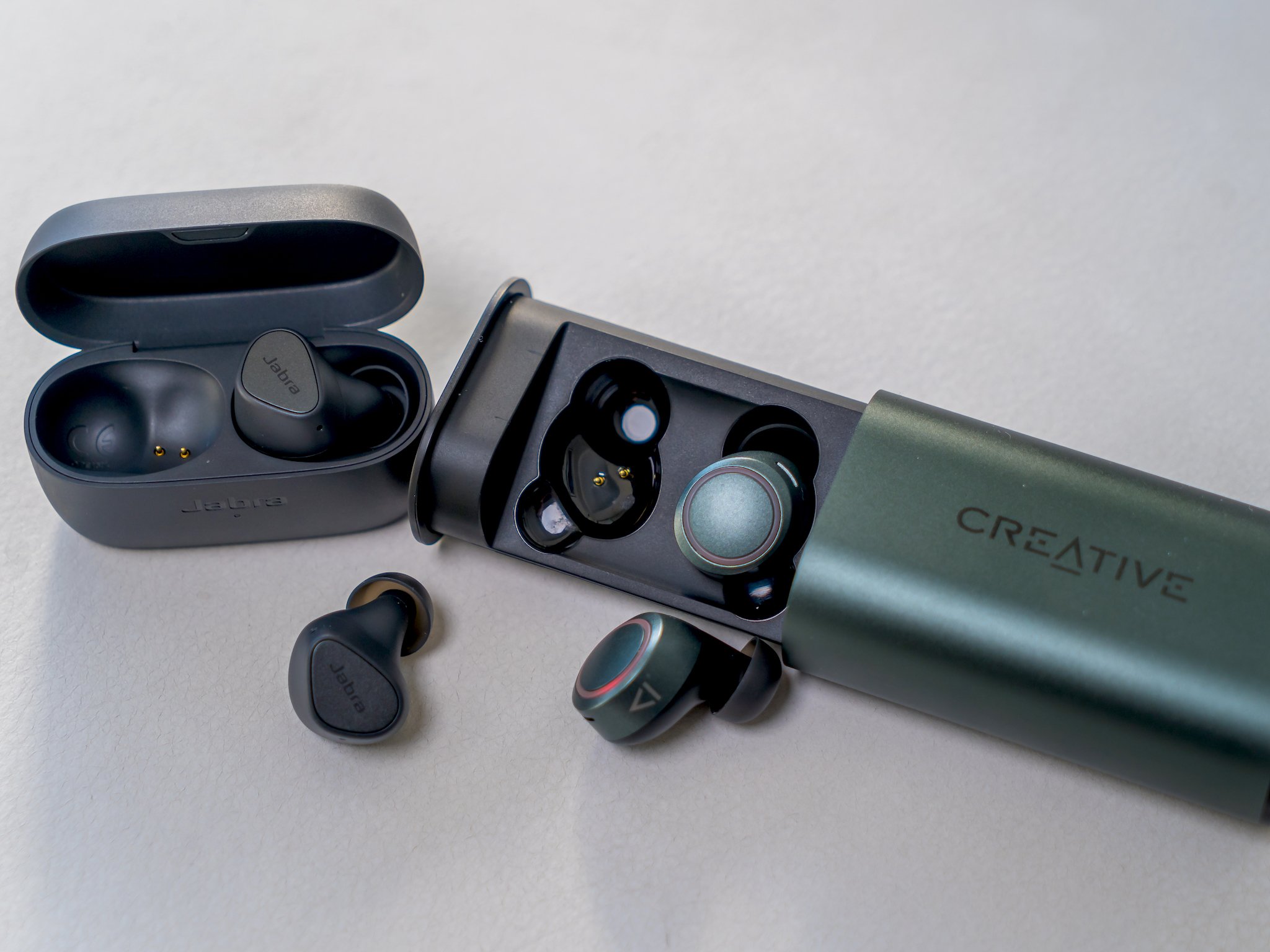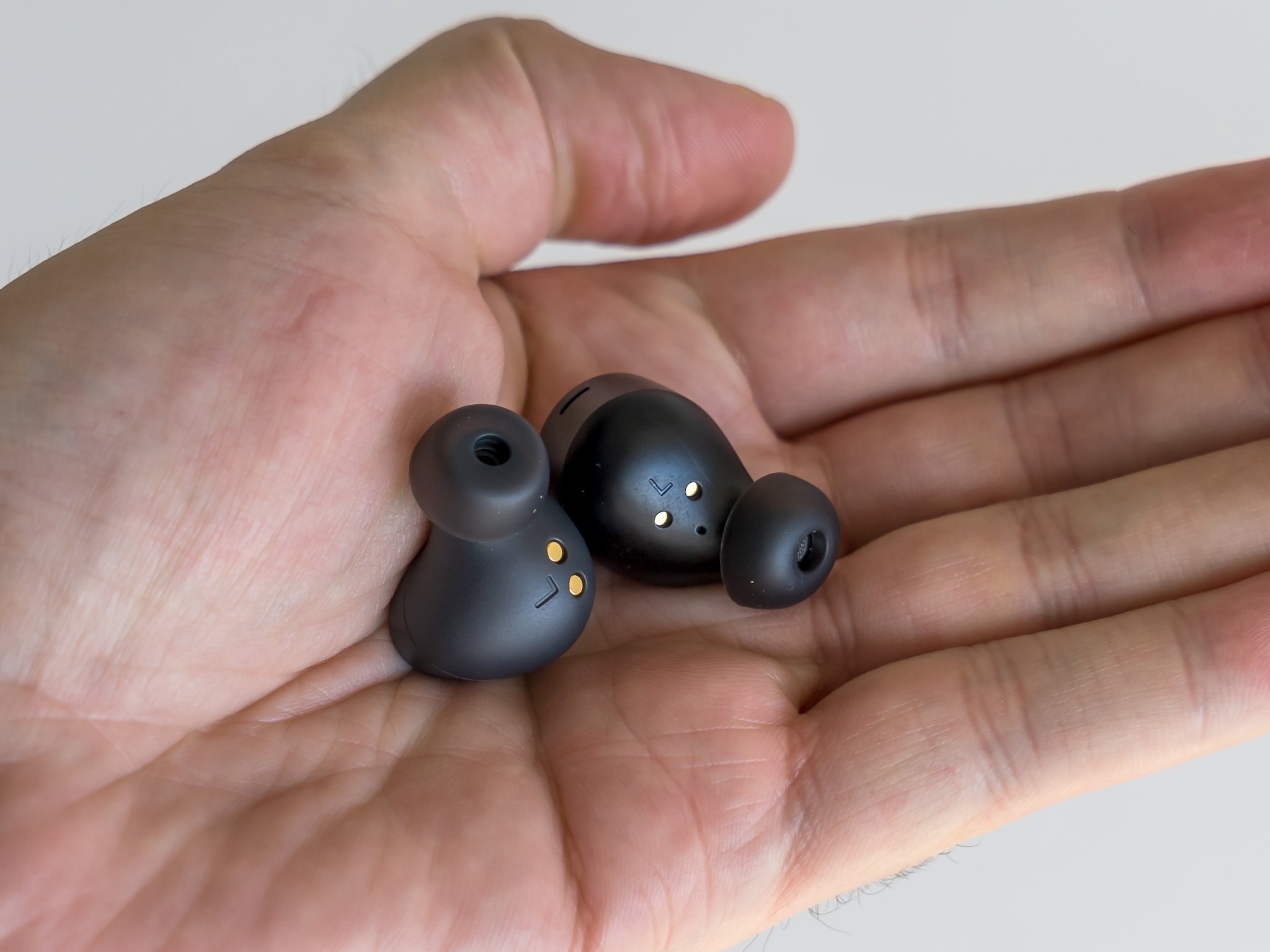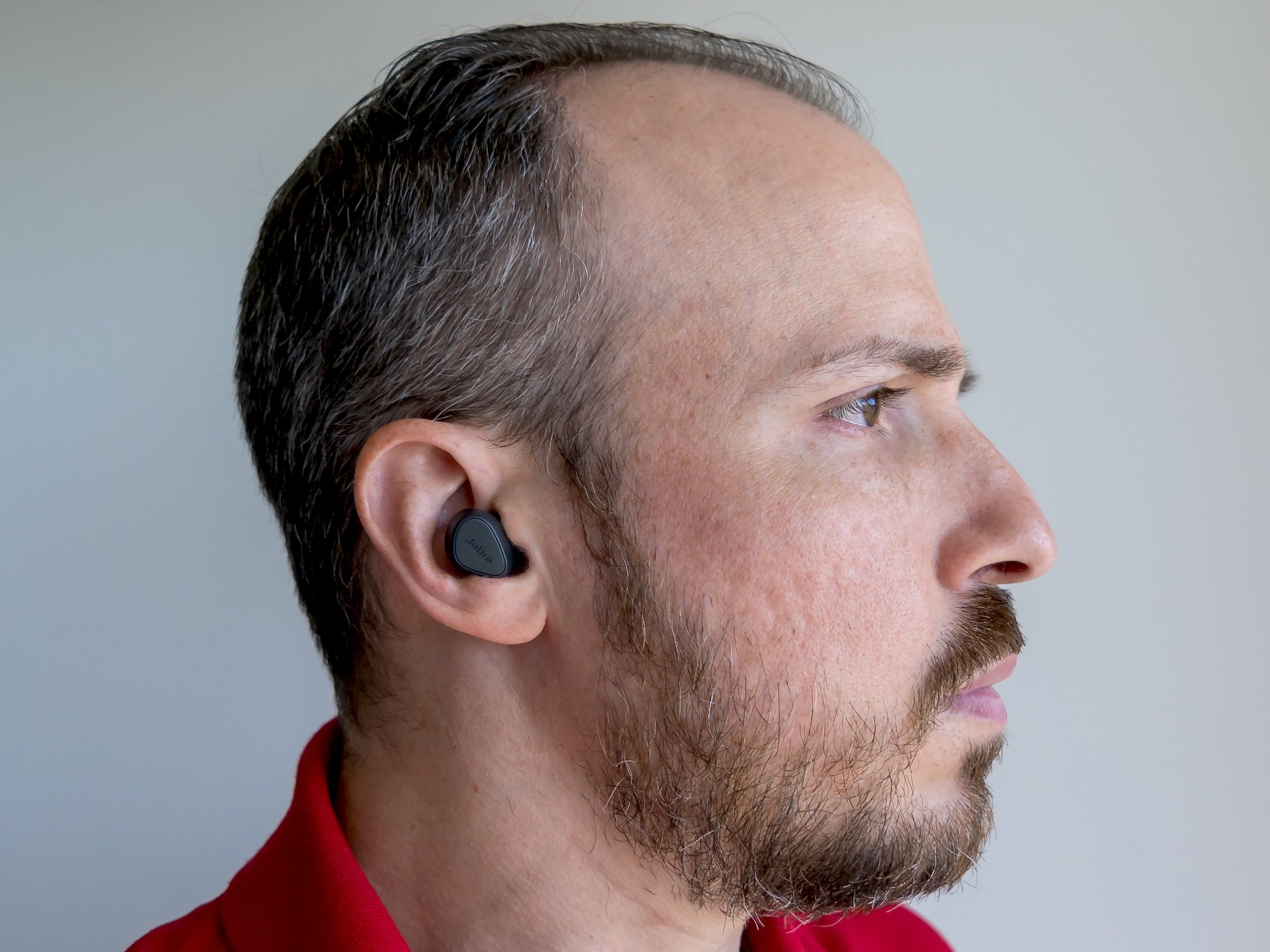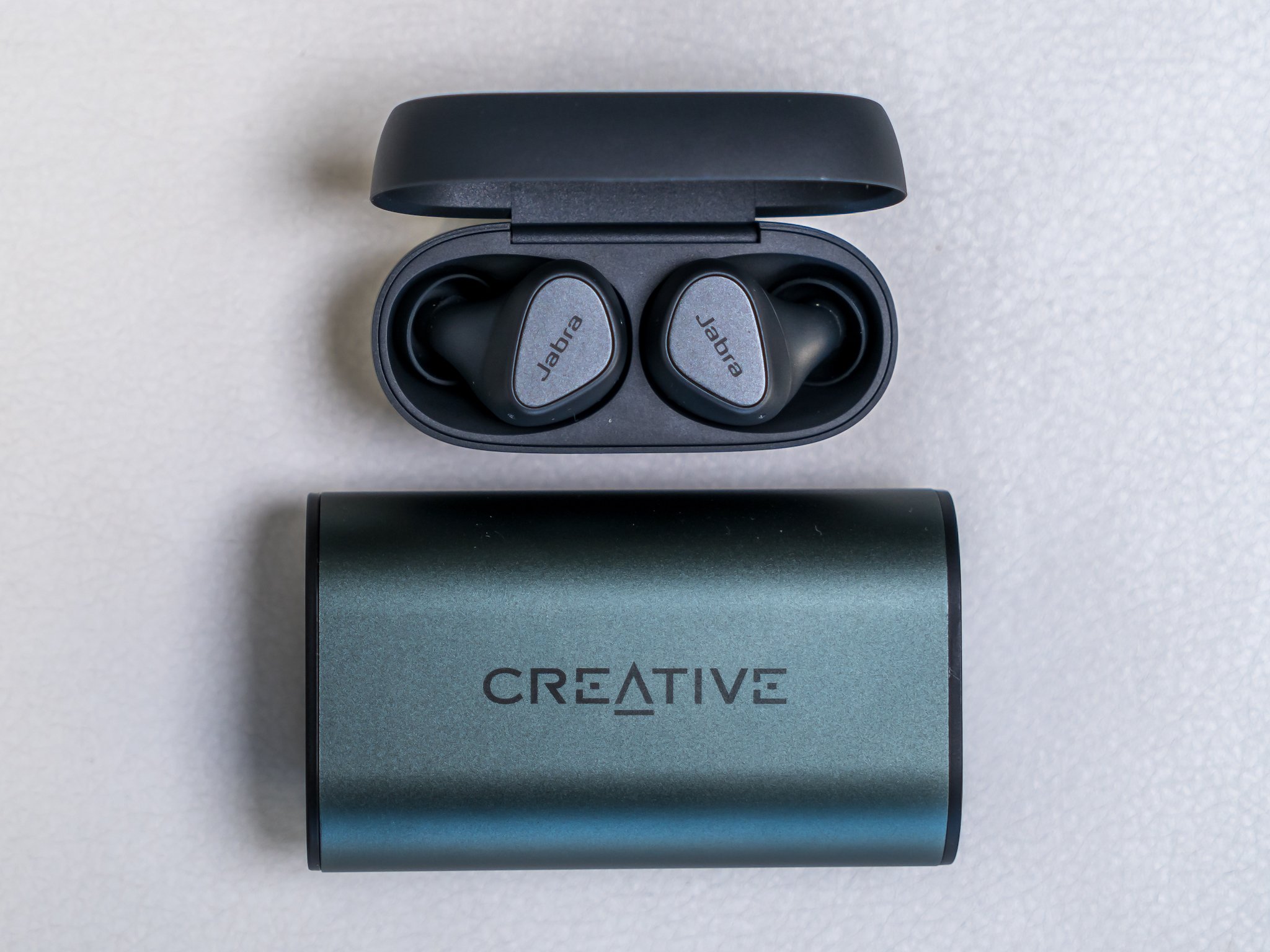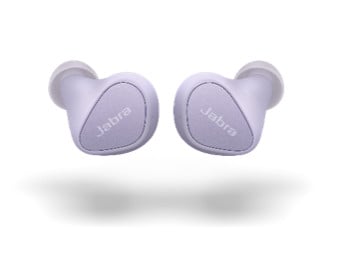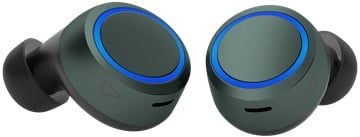Nicely done
Jabra Elite 3
Pros
- Good sound quality
- Solid bass with crisp highs
- Lightweight build and comfy fit
- Decent durability
- OK battery life
- Nice colors
Cons
- No noise cancelation
- No access to Sound+ EQ
Jabra made a name for itself by making quality earbuds for years, and the Elite 3 are an affordable pair influenced by the premium ones the company continues to produce. You have to accept not getting all the bells and whistles, but at least you can trust the quality you get out of them every time.
Back again
Creative Outlier Air V3
Pros
- Great audio quality
- Ambient mode works well
- Excellent battery life
- Comfortable fit
- Improved touch controls
- Wireless charging support
Cons
- Super X-Fi too limited
- Not fully noise-canceling
- Bulky case
Creative often delivers more for every buck spent, and the Outlier V3 are among the best earbuds in their price range. It's not just the sound quality. It's also newer features, like ambient sound and improved app support that helps bring a more balanced experience when wearing these budget-friendly buds.
You may not think of these two squaring off on anything, even if they make similar products. Jabra has been a perennial contender for the best earbuds on the market, while Creative hasn't always registered in the average person's consciousness looking for a new pair. The Outlier Air V3 are Creative's latest, and they admirably put together their various features to be an effective budget option. For Jabra, the Elite 3 are a pivot in a different direction, meaning they are a pair dedicated to more affordable tastes. Nevertheless, it's because they are both viable choices that it's worth comparing them.
Jabra Elite 3 vs. Creative Outlier V3: Making every dollar count
Numbers can indicate how good earbuds could be, except you don't know what you have until you hear it. Both companies have been in the audio space for several years, though not usually on the same level. Now that Jabra has committed to supporting something more affordable, it may have enough to shake up the best cheap wireless earbuds.
Creative has an edge in a few areas, particularly when it comes to battery life. It's already nice to have wireless charging as an option, and the extra playing time never hurts. Since neither pair has active noise cancelation (ANC), there aren't too many caveats to how long each pair lasts. Creative does have a noise reduction mode for the Outlier Air V3, which is not the same as ANC. Toggling it on — along with volume levels — can knock it down a bit, but Jabra can't quite hit the same battery life.
| Jabra Elite 3 | Creative Outlier Air V3 | |
|---|---|---|
| Durability | IPX4 | IPX5 |
| Bud battery life | 7 hours | 10 hours |
| Case battery life | 28 hours | 40 hours |
| Wireless charging case | No | Yes |
| Connectivity | Bluetooth 5.2 | Bluetooth 5.2 |
| Digital assistant support | Alexa, Google Assistant, Siri | Google Assistant, Siri |
| Supported audio codecs | SBC, aptX | SBC, AAC |
| Speaker size | 6mm drivers | 6mm drivers |
| Active noise cancelation (ANC) | No | Sort of |
| Ambient sound mode | Yes | Yes |
That leaves audio quality as the one central sticking point between them. It's not like either pair is terrible that way, considering they each offer excellent sound quality relative to what they cost. Jabra pursued a balanced soundstage, pushing just a little further on the lows and highs with the Elite 3. You end up with a reasonably detailed profile that tends to sound good no matter the genre. Not to mention they support the aptX Bluetooth codec, which is great for Android users. Granted, they aren't going to outdo a more premium pair of earbuds, but they certainly hold up well.
Creative took a similar approach with the Outlier Air V3, emphasizing trying to get more out of the mids. The results are great because of the way sound comes through without feeling like it skews wildly in one direction or the other. Newer drivers certainly help, at least compared to the Outlier Air V2, which also proved to be adept budget earbuds. There's excellent bass response, and the work done on the mids and highs honestly sounds impressive.
Where things diverge, a little is in how each pair gets some app support. Creative took longer to address this and now has a decent app offering customization, including EQ presets. Jabra's Sound+ app has been a steadying presence, except its EQ is limited to six presets, so there's no way to create your own. The options are pretty good; it's just a shame you can't tailor it how you want. Creative opted to negate custom EQ. Either way, there's plenty to play around with what's already there. The app is also where you can turn on ambient sound mode for either pair,
How they fit does also contribute to how they sound. Jabra made the Elite 3 super comfortable, with a lightweight build and contoured finish that should fit snugly for most ears. Creative also trimmed down the Outlier Air V3 to further improve comfort; only their slightly larger frame may not fit smaller ears as well as the Elite 3 can. Indeed, Jabra scores a win in that regard because of the choices available. The Elite 3 come with five sets of ear tips, some of which are shallower in case you don't need a tip to stick out as much. Creative sticks to standard small, medium, and large tips.
The Elite 3 come with five sets of ear tips. Some are shallower in case you don't need a tip to stick out as much.
Going back to the apps for a moment, Jabra doesn't let you customize the Elite 3's button controls, whereas Creative gives you carte blanche to set them up however you want. Still, buttons are often more reliable than touch-sensitive surfaces are with earbuds, and for that, Jabra holds an edge. Creative doesn't have that kind of integration beyond basic support for Google Assistant and Siri.
Jabra Elite 3 vs. Creative Outlier V3: They're actually listening
Jabra has been trying to integrate Alexa into its earbuds for at least the last three years, with mixed results. The Elite 3 have a primary connection whereby you can access your preferred voice assistant by double-pressing the left earbud. However, Alexa works pretty well most times, including playing music on Spotify by voice.
There is a separate Spotify integration that's also pretty neat, especially when resuming music after a while. For example, double-tapping the left button will continue the last track you were playing. Likewise, when the app is open on your phone, a double-press will play a recommended song from Spotify. One catch is that you have to pick between a voice assistant or Spotify because they share the same button function on the left earbud.
Creative doesn't have any special integrative features that way, other than to wake up your preferred voice assistant as any other earbuds do. You could use the Elite 3 that way as well, but at least you have some choice in the matter.
A quick note about phone calls; both are very good at them, though Jabra holds an edge because the microphones are just a tad clearer. Plus, you can use either earbud in mono mode, a feature the Outlier Air V3 also offers.
Jabra Elite 3 vs. Creative Outlier V3: Which one should you choose?
This is a tougher choice than it may seem on paper because we're talking about two pairs of earbuds that sound good. They each can fit comfortably and offer agreeable battery life, so the right boxes get checked off quickly. Where the Elite 3 start to create some distance is in the supporting features that make them more unique. Not just Alexa and Spotify, but also the additional ear tips and smaller case for easier transport. The best wireless earbuds usually have these types of distinctions, and they apply to the more budget-friendly variety, too.
Even from an aesthetic perspective, you can choose between four different colors for the Elite 3, whereas the Outlier Air V3 only come in midnight metallic green. All of these points don't take away from the excellent value they have, though. Creative put together one of the best value earbuds you can get, but it may not be quite as versatile as what Jabra pulled off with the Elite 3.
Budget elite
Jabra Elite 3
Reaching into budget territory
Jabra comes out with a budget-focused pair of earbuds in the Elite 3, and the results are easy to like when you want value.
Tough competitor
Creative Outlier Air V3
A good outlier
Creative is quietly churning out excellent earbuds at prices you can afford, and the Outlier Air V3 are just the latest.
Source: androidcentral
